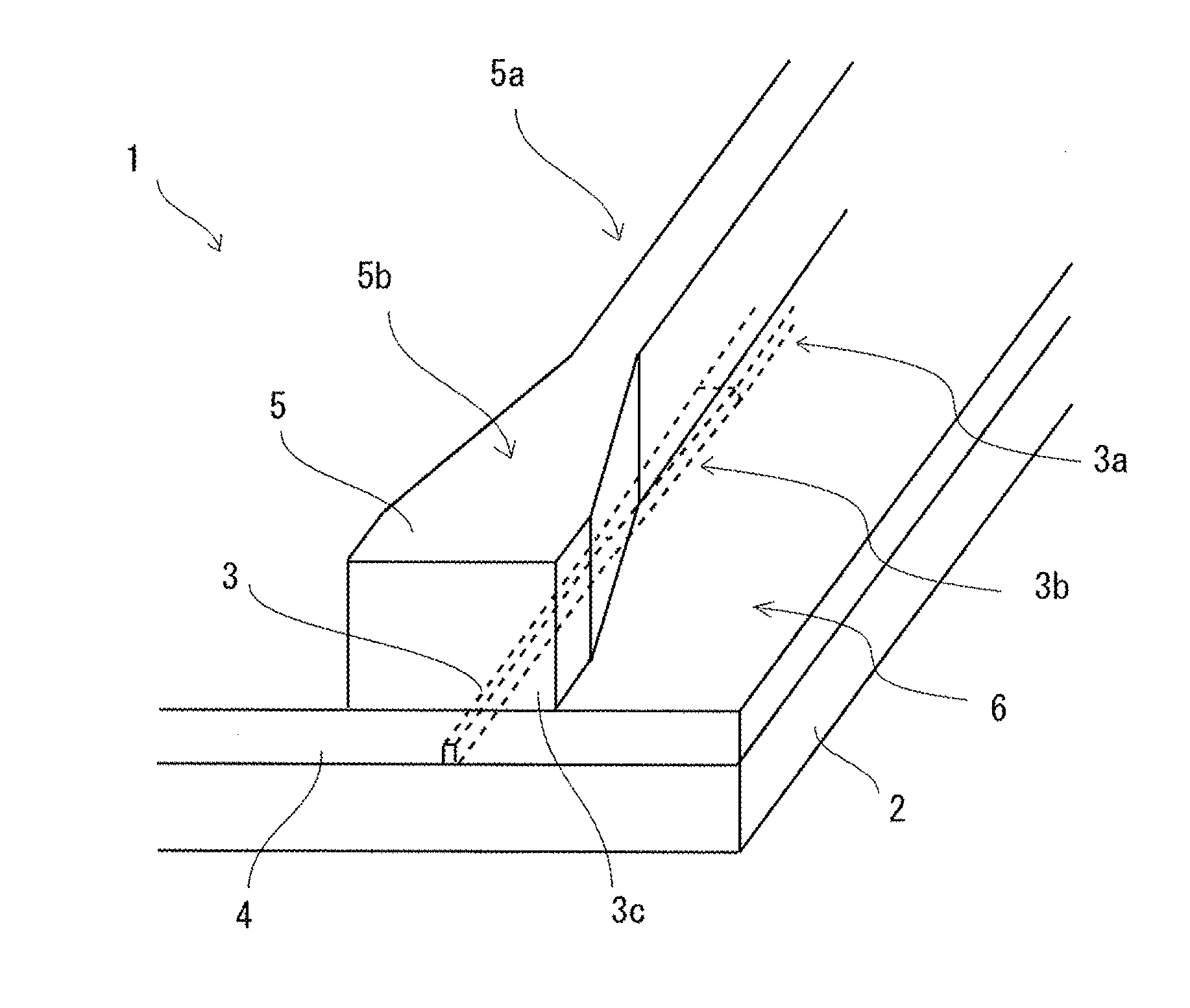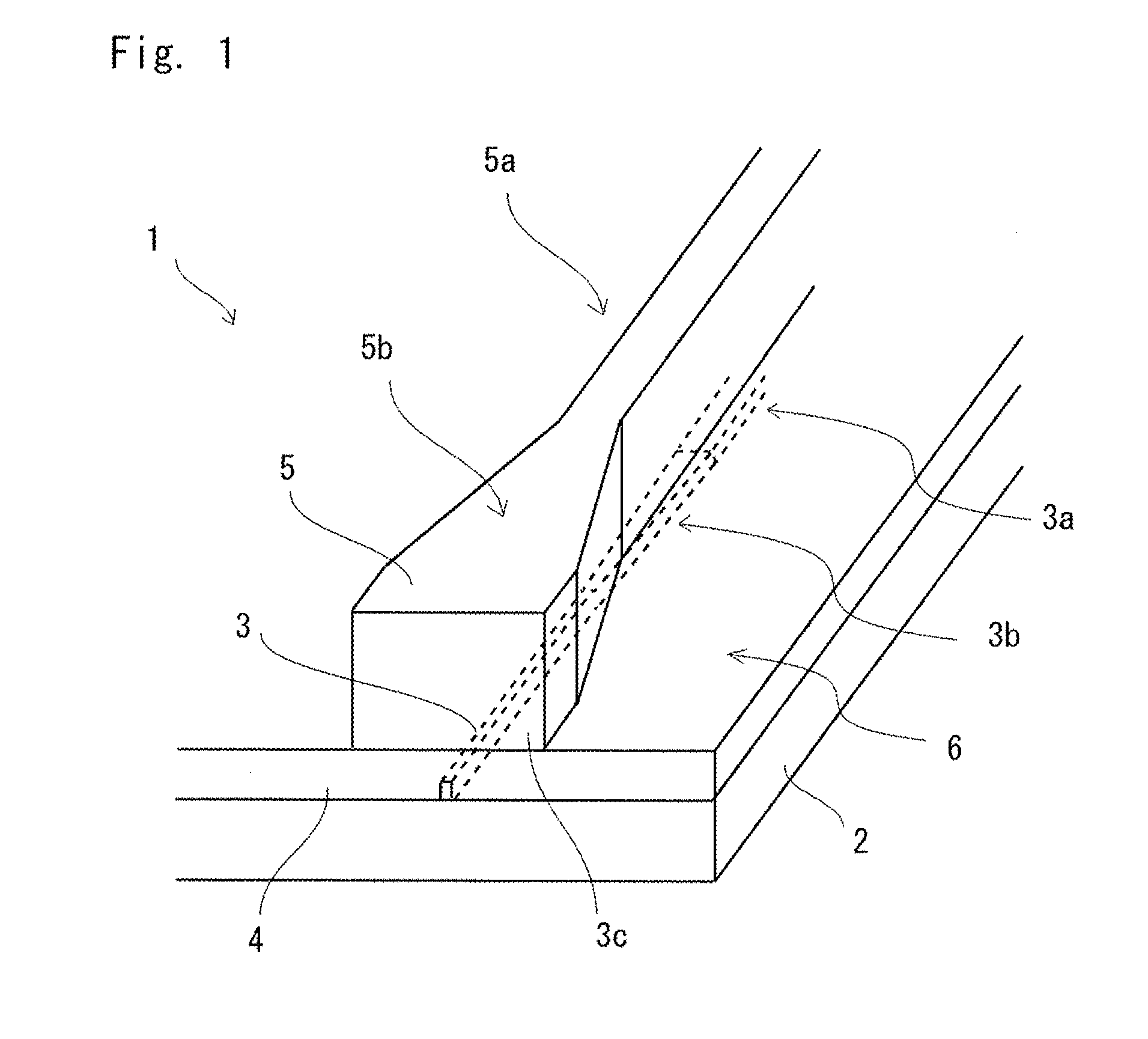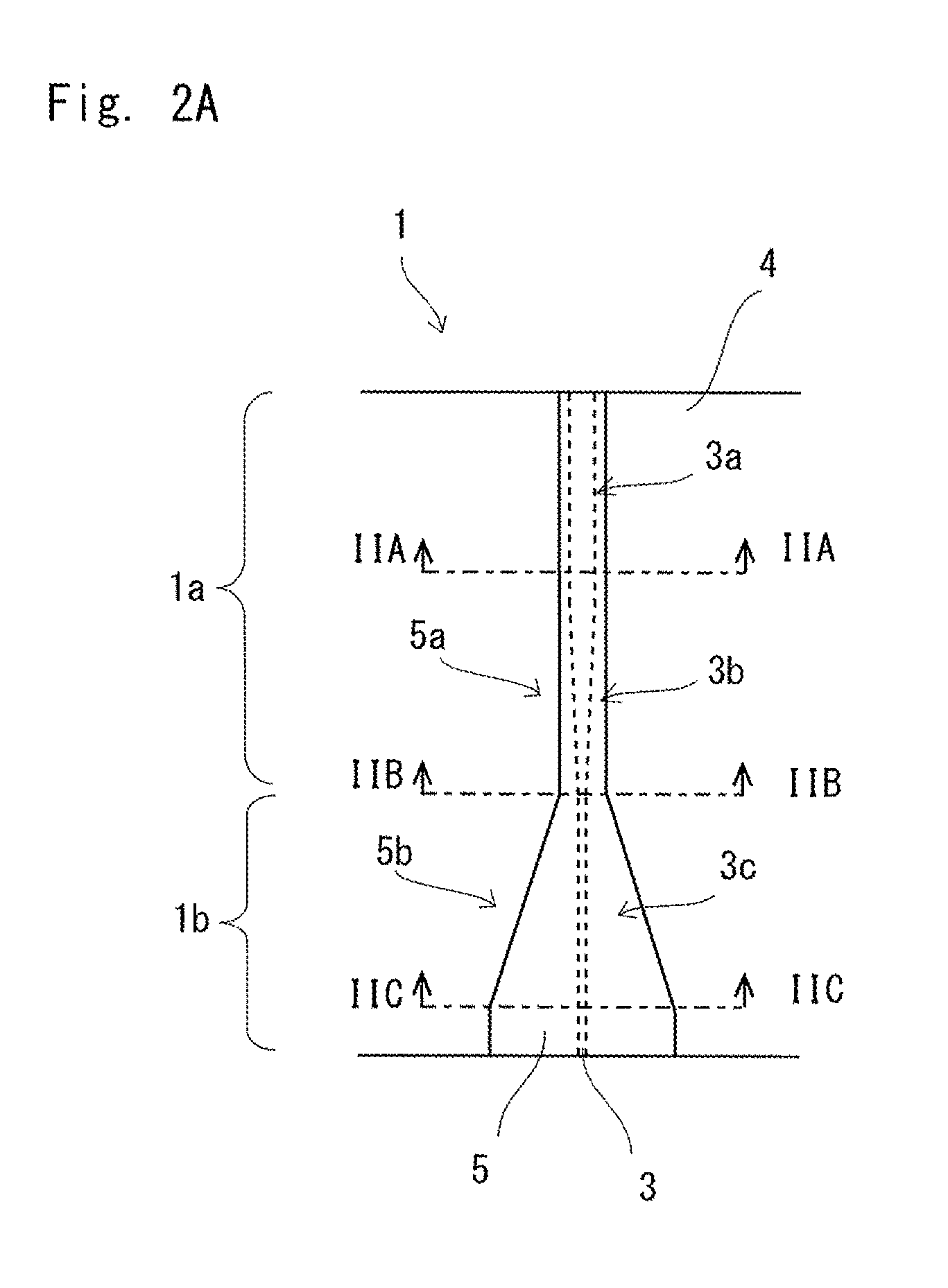Optical conversion element and optical conversion element manufacturing method
a technology of optical conversion elements and manufacturing methods, which is applied in the direction of optical waveguide light guides, instruments, domestic applications, etc., can solve the problems of reducing optical coupling efficiency, difficult adiabatic change in mode field, and inability so as to improve device and system performance including optical circuits, and achieve high optical coupling efficiency
- Summary
- Abstract
- Description
- Claims
- Application Information
AI Technical Summary
Benefits of technology
Problems solved by technology
Method used
Image
Examples
first exemplary embodiment
(Modification of First Exemplary Embodiment)
[0114]There is no big change in the operation with the structure including slight modification from the first exemplary embodiment. That is explained with reference to FIG. 4. Both FIGS. 4A and 4B are cross-sectional diagrams showing modified structures of the optical conversion element according to the first exemplary embodiment of the present invention.
[0115]FIG. 4A shows a cross-section of a tapered part 51b of the ridge 5 in the second tapered part 1b (see FIG. 2A) as a modification. As in this modification shown in FIG. 4A, the cross-section of the ridge 5 is not a rectangular but may alone have a convex cross-section structure with thin films on both sides of a bottom part. As described above, FIG. 4A shows the cross-section of the tapered part 51b of the ridge 5 in the second tapered part 1b, and the narrow width part 5a of the ridge 5 in the first tapered part 1a (see FIG. 2A) may also have a convex cross-sectional structure in a s...
second exemplary embodiment
[0118]Next, a second exemplary embodiment of the optical conversion element according to the present invention is explained with reference to the drawings.
[0119]FIG. 5A is a top view of the optical conversion element according to the second exemplary embodiment of the present invention. FIG. SB is a cross-sectional diagram taken along the line VB-VB of FIG. 5A.
[0120]As for an optical conversion element 13 according to the second exemplary embodiment, although the structure of the first outer core (slab 43 and ridge 53) is almost the same as that of the first exemplary embodiment, the structures of the inner cores are different. As shown in FIG. 5A, in a range of a first tapered part 13a, a thin wire core 33 includes a large cross-sectional area part 33a, which is the same core as the waveguide of the optical circuit and has the largest cross-sectional area, and a tapered part 33b with its cross-sectional area decreasing from the optical circuit side to the optical fiber side. Furthe...
example 1
[0125]The present invention is explained in more detail based on an example 1. The specific structure of the optical conversion element according to the present invention was examined by calculation on how the mode field changes. The calculation of the mode field was performed by the finite element method.
[0126]As the example 1, a structure was analyzed in which the optical conversion element 1 according to the first exemplary embodiment was created in an optical circuit on an SOI substrate. Structural parameters were that the refractive index of the material forming the lower cladding 2 was 1.452 and the thickness thereof was 3.00 μm, the refractive index of the material forming the thin wire core 3 was 3.480, the refractive index of the material forming the slab layer 4 was 1.496 and the thickness thereof was 2.00 μm, the refractive index of the material forming the ridge 5 was 1.496 and the thickness thereof was 9.5 μm, and the refractive index of the material forming the top cla...
PUM
| Property | Measurement | Unit |
|---|---|---|
| height | aaaaa | aaaaa |
| width | aaaaa | aaaaa |
| thickness | aaaaa | aaaaa |
Abstract
Description
Claims
Application Information
 Login to View More
Login to View More - R&D
- Intellectual Property
- Life Sciences
- Materials
- Tech Scout
- Unparalleled Data Quality
- Higher Quality Content
- 60% Fewer Hallucinations
Browse by: Latest US Patents, China's latest patents, Technical Efficacy Thesaurus, Application Domain, Technology Topic, Popular Technical Reports.
© 2025 PatSnap. All rights reserved.Legal|Privacy policy|Modern Slavery Act Transparency Statement|Sitemap|About US| Contact US: help@patsnap.com



